Steel Products
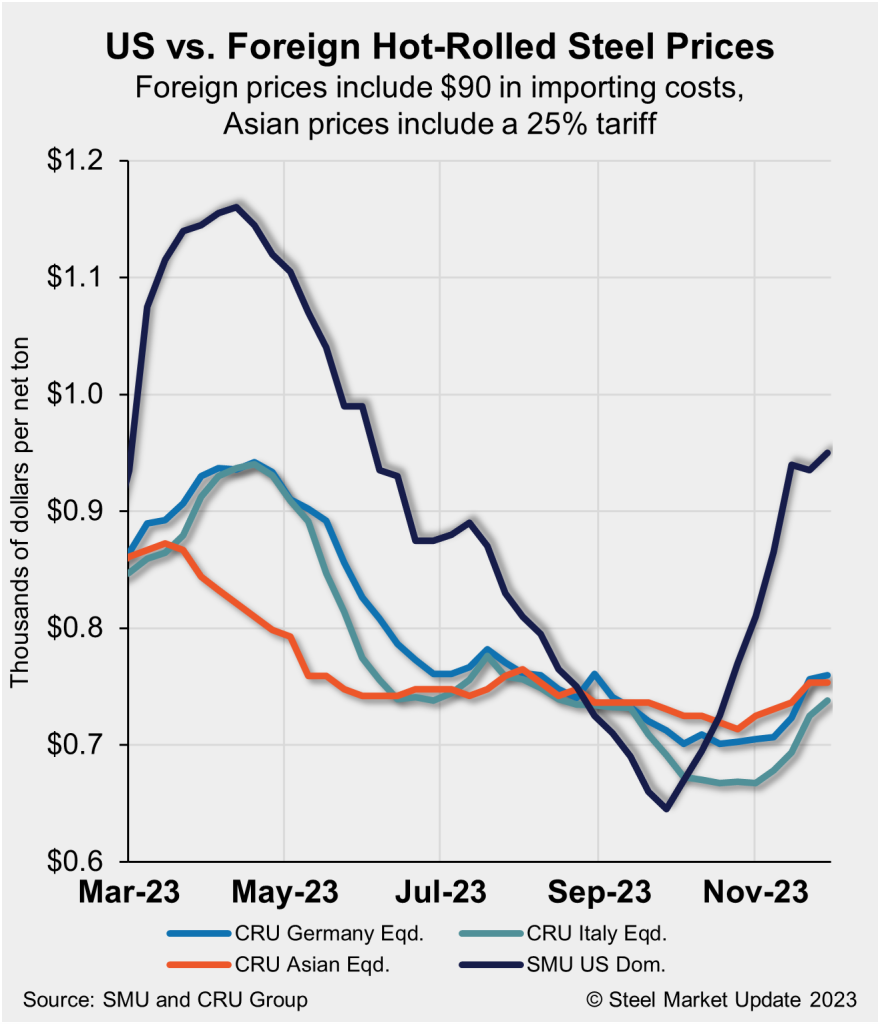
US HRC remains $200/ton more expensive than offshore product
Written by David Schollaert
November 30, 2023
US Hot-rolled coil (HRC) prices continue to move higher following repeated mill increases. The trend has caused domestic tags to become far more expensive than imported offshore hot band.
Domestic HRC tags have increased for the ninth consecutive week. While imports have been on a four-week rally, the gains have been only marginal over the same period when compared to US prices, according to SMU’s latest foreign vs. domestic price analysis.
Nucor’s now targeting $1,100 per ton ($55 per cwt) base prices for HRC, according to a letter to customers on Nov. 27. And while US HRC tags increased to $950 per ton, up $15 per ton from the week before, they’re still trailing current mill target base prices, according to our interactive pricing tool. Tags have, nonetheless, soared by more $300 per ton from their lowest point of the year, $645 per ton in late September.
Import prices, in contrast, had been largely trending downward since late April but have been on a steady rise over the past month. The result: Imported product is still 21% cheaper than domestic material once freight and other costs are accounted for. That’s down slightly from 23.7% two weeks ago but still a shift from late September, when imports were nearly 11% more expensive than US product.
Methodology
This is how SMU calculates the theoretical spread between domestic HRC prices (FOB domestic mills) and foreign HRC prices (delivered to US ports): We compare SMU’s US HRC weekly index to the CRU HRC weekly indices for Germany, Italy, and East and Southeast Asian ports. This is only a theoretical calculation. Import costs can vary greatly, influencing the true market spread.
We add $90 per ton to all foreign prices as a rough means of accounting for freight costs, handling, and trader margin. This gives us an approximate CIF US ports price to compare to the SMU domestic HRC price. Buyers should use our $90-per-ton figure as a benchmark and adjust up or down based on their own shipping and handling costs. If you import steel and want to share your thoughts on these costs, please don’t hesitate to get in touch with david@steelmarketupdate.com.
Asian hot-rolled coil (East and Southeast Asian ports)
As of Thursday, Nov. 30, the CRU Asian HRC price was $531 per ton, unchanged from the previous week. Adding a 25% tariff and $90 per ton in estimated import costs, the delivered price of Asian HRC to the US is approximately $753 per ton. The latest SMU hot rolled average for domestic material is $950 per ton.
The result: US-produced HRC is theoretically $197 per ton more expensive than steel imported from Asia.
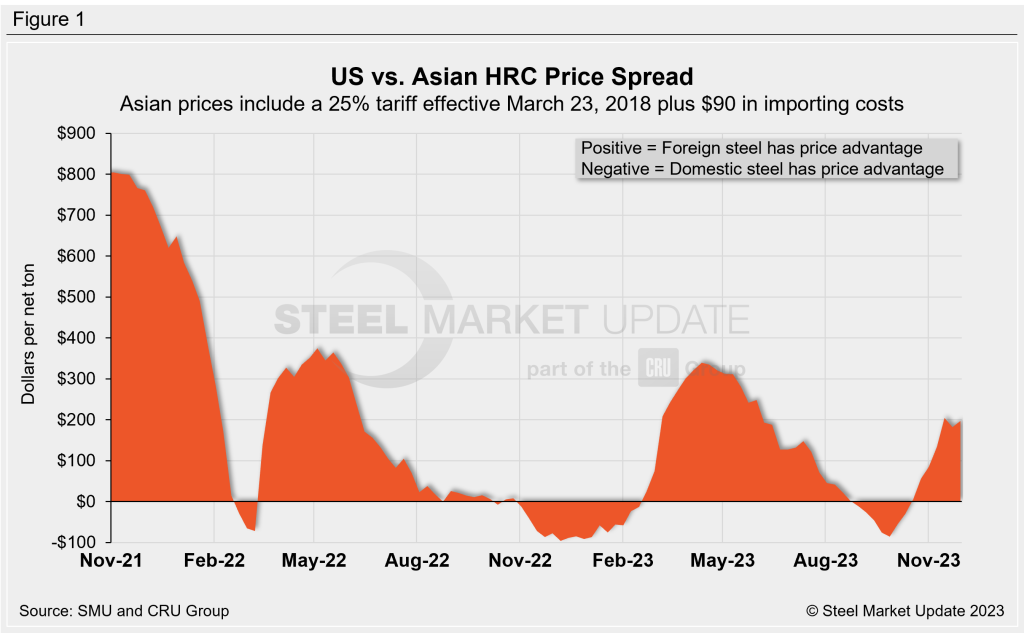
Italian hot-rolled coil
Italian HRC prices increased by $13 this week to roughly $648 per ton, and are now up $70 per ton over the past month. After adding import costs, the delivered price of Italian HRC is in theory $738 per ton.
That means domestic HRC is theoretically $212 per ton more expensive than HRC imported from Italy. That’s down from $246 per ton just two weeks ago but still a $261-per-ton swing from late September when US prices were $49 per ton cheaper than prices for Italian hot band.
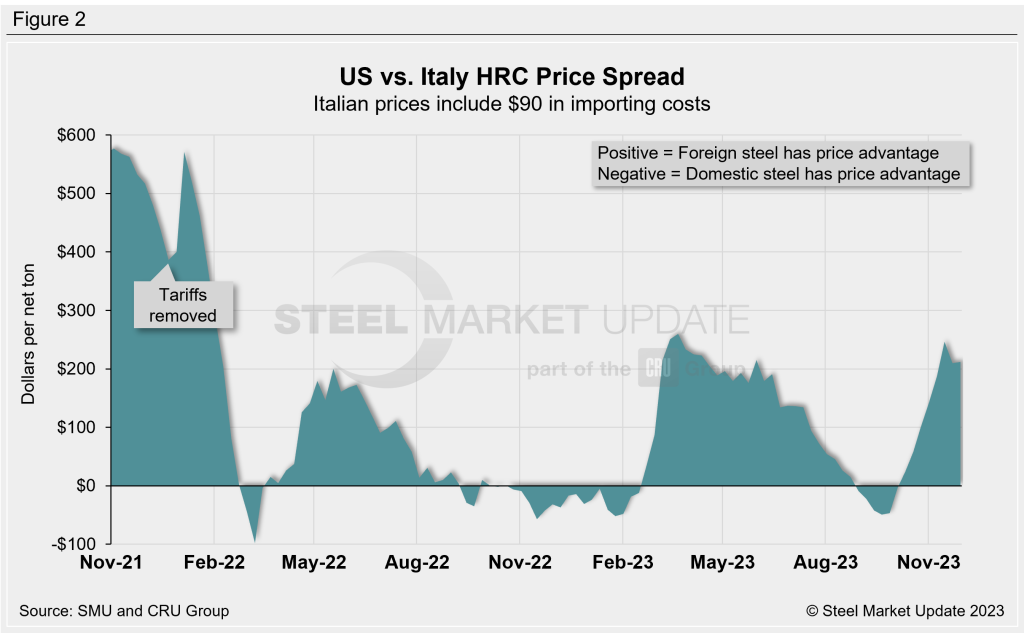
German hot-rolled coil
CRU’s German HRC prices increased by just $4 per ton week over week (WoW) to $670 per ton. After adding import costs, the delivered price of German HRC is in theory $760 per ton. The result: Domestic HRC is theoretically $190 per ton more expensive than HRC imported from Germany.
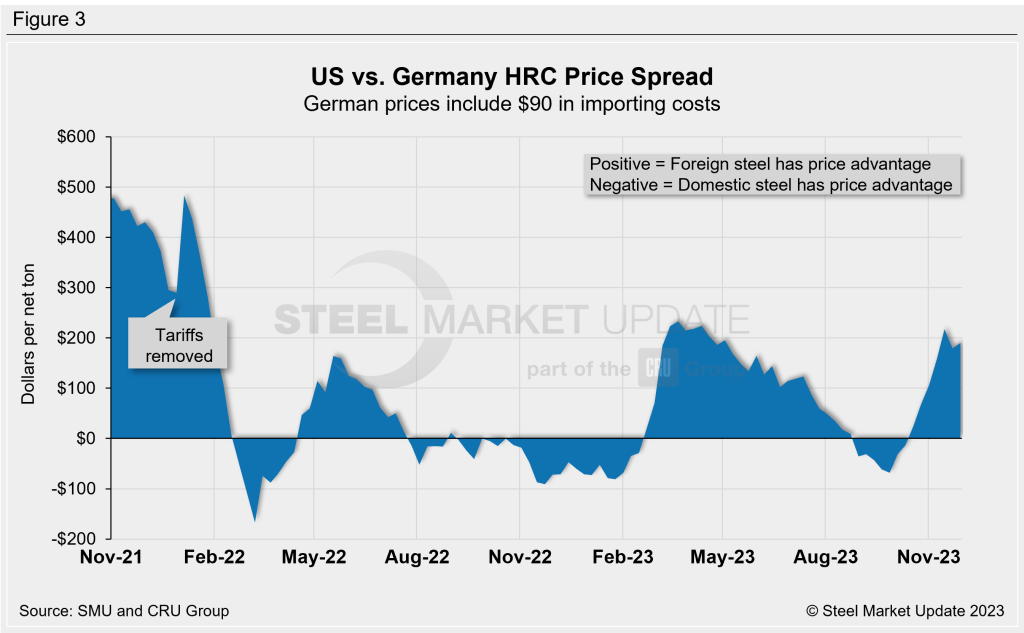
Figure 4 compares all four price indices. The chart on the right zooms in to highlight the difference in pricing from the second quarter of this year to the present.
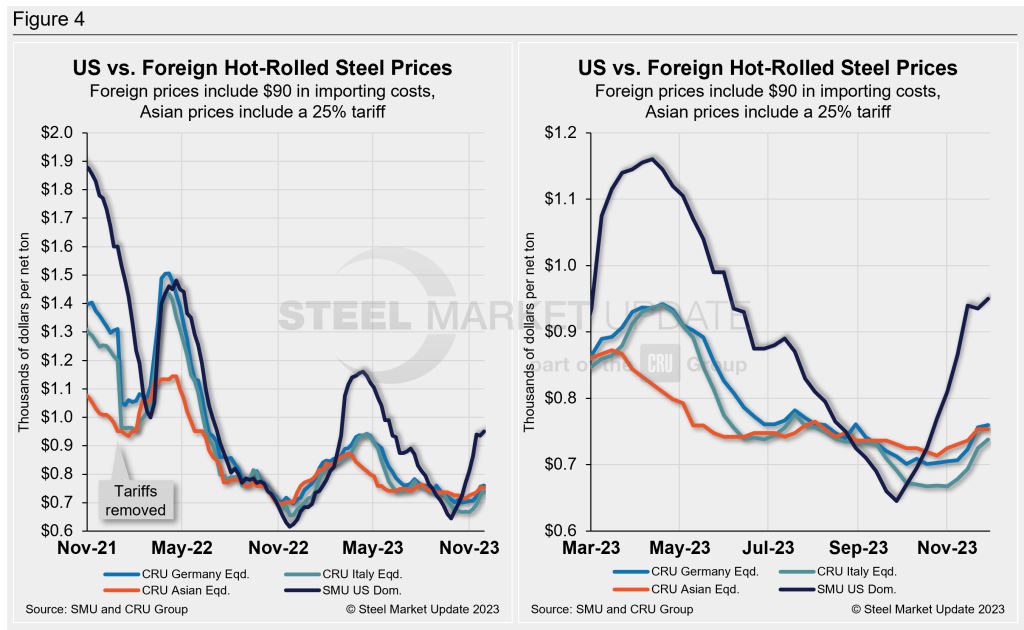
Notes: Freight is important in deciding whether to import foreign steel or buy from a domestic mill. Domestic prices are referenced as FOB the producing mill, while foreign prices are CIF the port (Houston, NOLA, Savannah, Los Angeles, Camden, etc.). Inland freight, from either a domestic mill or from the port, can dramatically impact the competitiveness of both domestic and foreign steel. It’s also important to factor in lead times. In most markets, domestic steel will deliver more quickly than foreign steel.
Effective Jan. 1, 2022, the traditional Section 232 tariff no longer applies to most imports from the European Union. It has been replaced by a tariff rate quota (TRQ). Therefore, the German and Italian price comparisons in this analysis no longer include a 25% tariff. SMU still includes the 25% Section 232 tariff on foreign prices from other countries. We do not include any antidumping (AD) or countervailing duties (CVD) in this analysis.

David Schollaert
Read more from David SchollaertLatest in Steel Products

Final Thoughts
The difference: The spat with Turkey was a big deal for steel. This time, the 50% reciprocal tariff for Brazil – if it goes into effect as threatened on Aug.1 – hits everything from coffee and to pig iron. It seems almost custom-built to inflict as much pain as possible on Brazil.

CRU: US rebar and wire rod prices rise alongside S232 increase
CRU Senior Steel Analyst Alexandra Anderson discusses current market and pricing dynamics for long steel products in the US.
CRU: Excessive global supply could hit rebar mill investments in US
Following the onset of the war in Ukraine in March 2022, concerns about import availability and expectations of rising demand from President Biden’s Infrastructure Bill pushed US rebar prices to record highs. In response, a flurry of new mills and capacity expansions were announced to meet the rise in demand from growth in the construction […]

Steel buyer spirits tempered by soft spot market conditions
Steel sheet buyers report feeling bogged down by the ongoing stresses of stagnant demand, news fatigue, tariff negotiations or implementation timelines, and persistent macroeconomic uncertainty.

CRU: US stainless prices to rise on expanded S232 tariffs
Stainless prices in the US market will rise, following price increases by major US producers. Our base case scenario incorporates higher US prices in the near term, despite the initial negative reaction by the market. US stainless prices will go up in 2025 H2 and will stay elevated in 2026 as tariffs on stainless […]
